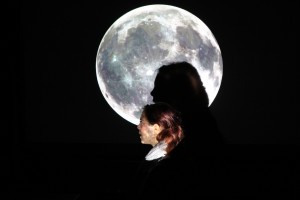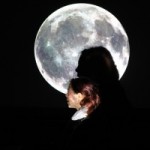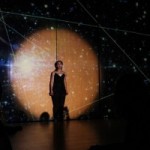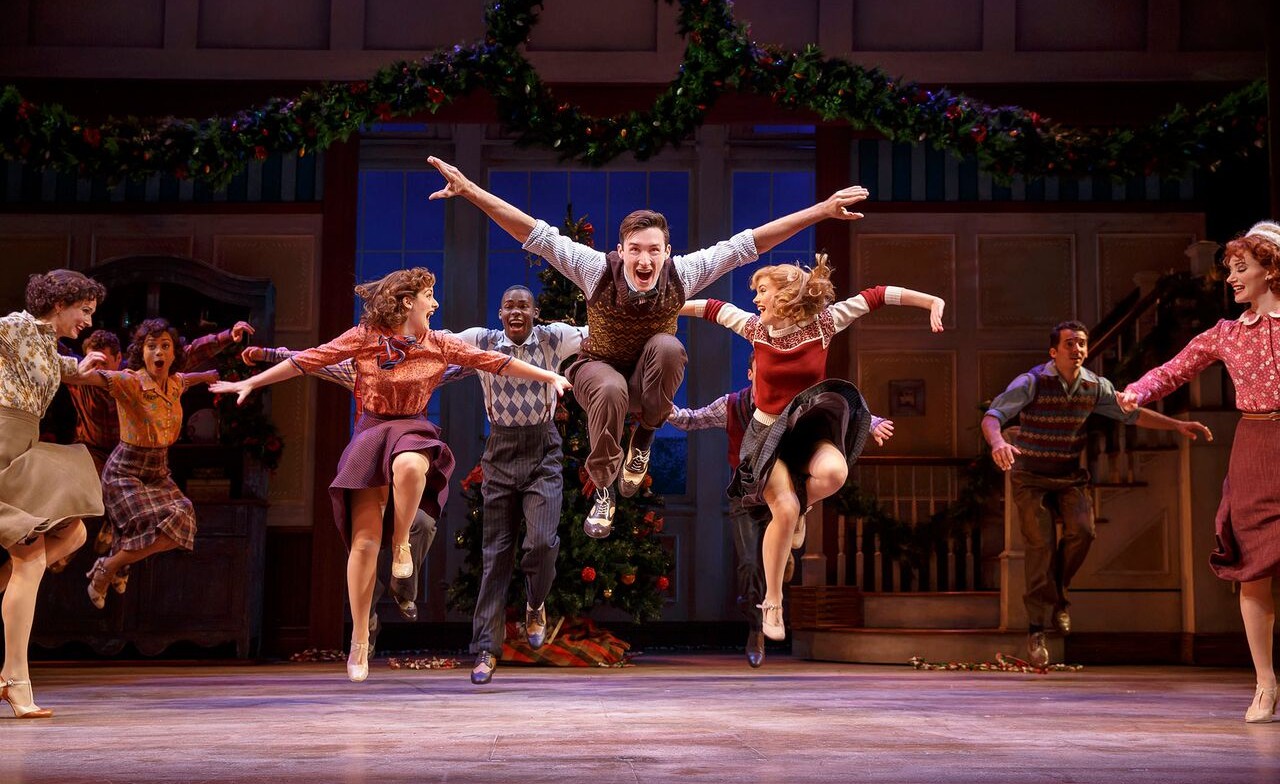By Marcina Zaccaria
Breathtaking visuals, poetic text, and thoughtful acting describe “Our Planet,” a site-specific play at Japan Society.
Inspired by Thorton Wilder’s “Our Town,” “Our Planet” intertwines the everyday life of an ordinary family with the cataclysmic events of the Earth’s birth and death. The story follows Terri (a personification of Earth) as she grows up surrounded by her family and friend Luna in a Tokyo apartment.
Audience members are asked to stand, sit on benches or on the floor as we follow the actors from the lobby to an art gallery, to a conference room, to an office, and finally to a large theater. There is something particularly revealing in seeing not only the spaces that are traditional performance spaces but also the conference rooms and offices.
Acting by Jenny Seastone Stern and Julian Rozzell, Jr. is thoughtful and powerful without being overwhelming. Scenes between the actors cover the expanse of Japan Society. As they find each other over time and space, they articulate the days of their journey. They handle the text carefully. It is poetic without being spare. The actors are never afraid to stand out with it.
Like a Thorton Wilder play, the script by Yukio Shiba has a sensitivity and a kindness that draws us in. The actors cover the space without being detached from it. In some ways, they are one with the stars and the space and the light. They find each other in many different rooms throughout the Japan society. They say hello and goodbye repeatedly and without hesitation.
Commissioned as part of the Society’s 60th Anniversary Performing Arts Season, this production takes place throughout over a dozen public and nonpublic spaces within the Society’s landmarked building. Director Alex Duffy brilliantly blends the world of the actors with the world of the audience. As the audience is asked to acknowledge each other and the architecture of Japan society, they are also transported into the world of the story of the performers. It is not a great comprehension gap, as Duffy asks the audience, limited to 30 individuals, to follow the play, up and down the stairs, and from room to room. Duffy does give the audience time to hear and see, and though the story is intricate, it is in no way baffling or disquieting. The last image of Rozzell merging with the orange smoke while attempting to connect with Stern is particularly potent.
Mimi Lien (Scenic Design) works with the space. Having designed sets and environments for the theater, dance, and opera, Lien’s work often focuses on the interaction between audience/environment and object/performer. The actors navigate carefully throughout the performance, as the play unfolds. They are often seen against moving visuals. Nobuyuki Hanabusa designed the Motion Graphics. He has previously designed motion graphics for a Tokyo Collection fashion show and a collaborative project that features choreography interacting with motion graphics. Costume Design is by Becky Lasky and Lighting Design is by Jiyoun Chang. The visuals are impressive and make “Our Planet” a breathtaking spectacle.
Founded in 1907, Japan Society is a world-class, multidisciplinary hub for global leaders, artists, scholars, educators, and English and Japanese-speaking audiences. At the Society, more than 100 events each year feature sophisticated, topically relevant presentations of Japanese art and culture and open, critical dialogue on issues of vital importance to the U.S., Japan, and East Asia.
Japan Society is located at 333 East 47th Street, between First and Second Avenues. Tickets to “Our Planet” are available by calling the Box Office at 212-715-1258 or by visiting http://www.japansociety.org.
*Photos: Julie Lemberger




















